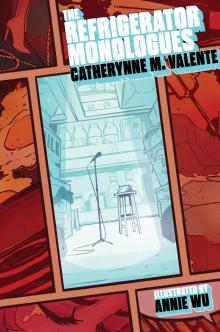


Seafurrers
Philippa Sandall
Next sighting was January 31. Surfman C. P. Brady of the Cape Hatteras Coast Guard Station Number 183 spotted a schooner driven high on the shoals, but heavy seas made it impossible to get to the wreck. They telegraphed headquarters:
COAST GUARD WASHINGTON D.C.
UNKNOWN FIVE MASTED SCHOONER STRANDED DIAMOND SHOALS SAILS SET BOATS GONE NO SIGNS OF LIFE SEA ROUGH STATIONS NUMBER 183 184 186 UNABLE TO BOARD SCHOONER 1630
SEVENTH DIST.
No one could board until February 4, when the crew of salvage boat Rescue found a deserted ship—no anchors; no boats; smashed steering wheel and gear; burned-out running and distress lights; and no nautical instruments, no chronometer, no papers, and no ship’s log. But there were clearly plans for dinner with a pot of pea soup, a pan of spareribs, and a pot of coffee on the stove.
“Yes, I was here when the Carroll A. Deering went on the point,” recalled Doc Folb fifty years later:
She went with all five masts; all sails set. When the Coast Guard went out to her they found the table set. They never found a man, a boat, or anything. . . . I believe that the men got in the quicksand—it was awful quicksandy out there. Never found hide or hair, nor a boat or anything from her. Everything disappeared. The only survivor was a cat, I believe.
In fact, three cats were rescued and given a new home with the salvage boat’s steward, L. K. Smith. Perhaps they continued seafurring with him, but it wouldn’t be too surprising if they opted for terra firma.
Incidentally . . .
For every real ghost ship or derelict found adrift with crew and passengers inexplicably missing or dead like the Carroll A. Deering, there are countless legendary phantoms like the Flying Dutchman. Truth can be stranger than fiction at sea, but sometimes it turns out to be fiction after all.
INCIDENT 28: Cannon Cat Cold Case
“The Loss of the Monitor, by a Survivor”
Francis B. Butts, Century Illustrated Monthly Magazine, December 1885
“
Bailing was now resumed. I occupied the turret all alone, and passed buckets from the lower hatchway to the man on the top of the turret. I took off my coat—one that I had received from home only a few days before (I could not feel that our noble little ship was yet lost)—and rolling it up with my boots, drew the tampion from one of the guns, placed them inside, and replaced the tampion. A black cat was sitting on the breech of one of the guns, howling one of those hoarse and solemn tunes which no one can appreciate who is not filled with the superstitions which I had been taught by the sailors, who are always afraid to kill a cat. I would almost as soon have touched a ghost, but I caught her, and placing her in another gun, replaced the wad and tampion; but I could still hear that distressing howl. As I raised my last bucket to the upper hatchway no one was there to take it. I scrambled up the ladder and found that we below had been deserted. I shouted to those on the berth-deck, ‘Come up; the officers have left the ship, and a boat is alongside.’
”
ACCORDING TO BART
Francis B. Butts was but a lad of eighteen learning the ropes as a landsman on the Monitor when he made his escape—he had joined up just a month before. He must have told his tale countless times to family and friends, trying out various embellishments before putting pen to paper for his presentation on the Civil War Battle of Hampton Roads and the sinking of the Monitor to the Rhode Island Soldiers and Sailors Society in 1878, which was later printed in Century Illustrated Monthly Magazine.
No self-respecting sailor lets facts get in the way of a good story. Mr. Butts’ has all the signs of a well-practiced yarn spun for an appreciative (but not fainthearted) audience. The question remains: Did the USS Monitor, the first ironclad warship commissioned by the Union Navy during the Civil War, have an able-bodied seafurrer on board? No accounts actually written at the time mentioned one. Butts’ account was published more than twenty years later. There were certainly rats on board. And over the summer of 1862, a portion of the iron deck was “converted into a stock yard containing just at present, one homesick lamb, one tough combative old ram, a consumptive calf, one fine lean swine, an antediluvian rooster & his mate, an old antiquated setting hen,” according to Paymaster William Keeler—a very reliable witness—writing to his wife. So why not a cat?
It’s highly likely there was a ship’s cat. Just not the wet, very agitated, but seemingly compliant black one that didn’t object to Mr. Butts singlehandedly stuffing it into a cannon with an eleven-inch opening on a dark and stormy night on a sinking ship.
Cold cases warm up when new furrensic evidence surfaces to sift through. In this case, what sank did surface in 2002, when the Monitor’s 120-ton rotating turret, which housed its two eleven-inch-bore cannons, was hoisted from its mid-Atlantic resting place. So this became an ongoing investigation, and researchers can look down the barrel. The reveal comes in a personal communication from marine historian Anna Holloway, formerly curator of the USS Monitor Center at the Mariners’ Museum in Newport News, Virginia, for fourteen years before heading over to the National Parks Service and then SEARCH, Inc.
Even with just one account, we had to approach the excavation of the turret and guns with the knowledge not only that there might be human remains there (16 men went down with the vessel, and in fact, we found two sets of human remains in the turret), but there might also be a cat, boots and a coat (along with other personal artifacts). We did discover a wool sack coat and one full boot in the turret—though not in one of the guns. The tompions for both guns were not evident. Still, we excavated the bores of both guns quite carefully. No kitty cat has been found so far—either in the turret or in the guns. There is still a small amount of concretion in the guns back at the breech—so I suppose there is still a minuscule chance that cat bones could be found. So we keep looking because there’s nothing ironclad about this case yet.
Incidentally . . .
USS Monitor broke the battleship mold forever.
• She was revolutionary, made of iron, not wood, and powered by steam and steam alone—no masts or sails.
• She was a radical departure from traditional design; barely a foot of her deck was visible because all machinery, storage, working, and berthing areas were below the waterline.
• She was heavily armored with an armor belt 5 feet (1.5 meters) high and 6 inches (15 centimeters) thick at the waterline, and had a revolving turret that was 9 feet (2.75 meters) high and 22 feet (6.7 meters) in diameter, and housed two 11-inch (279-millimeter) Dahlgren smoothbore cannons.
Less than two months after launching, she encountered the larger and more heavily armed Confederate Virginia in the Battle of Hampton Roads. They were the first iron ships to clash in naval warfare, signaling the end of wooden warships. But her end was nigh, too, because she wasn’t very seaworthy. Shortly after midnight on December 31, 1862, while being towed by USS Rhode Island to Beaufort, North Carolina, Monitor sank in a gale off Cape Hatteras. Her resting place, a mystery for more than a century, was found by scientists on Duke University’s research vessel Eastward in August 1973. Her final resting place was designated the United States’ first national marine sanctuary in 1975.
INCIDENT 29: Soggy, Groggy Moggies
“Cat Overboard”
Newcastle Morning Herald and Miners’ Advocate (Australia), September 7, 1929
“
This is the story of Tim, the ship’s cat, of the Grimsby steam trawler, Witham. Whilst Tim was running along the ship’s rail, out in the North Sea, a huge wave engulfed the trawler, and swept the cat overboard. At once the alarm was raised, and Skipper Howard brought the vessel about, the crew springing to their stations as though the alarm had been ‘Man overboard.’ Baskets and boards were flung over the side to the struggling cat, who, paddling like a dog, was making a brave effort to keep his head above water. Fifteen minutes elapsed before the vessel, hampered by her fishing gear, could be manoeuvred into a position from which a basket, secured to a boat-hook, could be extended to Tim, who, making
a last effort, drove his claws into the wicker work and held on grimly until he was dragged on deck. Tim was for three hours too exhausted to move, but later he recovered completely. The manoeuvre of the Witham was seen by a Dutch trawler, whose master assumed that a man had fallen overboard. He hurried at full speed to the spot, and was speechless with amazement, when he learnt the cause of the excitement.
”
Scott’s Last Expedition, Volume II
“Voyages of the Terra Nova by Commanders E. R. G. R. Evans
and H. L. L. Pennell”
Second Voyage, Dec. 24, 1911
“
The Sunday before Christmas, just as we were going to lunch, . . . the cat [who overindulged in moths and thus slept through the admiral’s inspection] fell overboard. He had been baiting the dogs on the poop, got uncomfortably close to one and, jumping to avoid the dog, went overboard. Fortunately it was an exceptionally calm day; the sea boat was lowered, and [he] was picked up and the ship on her course again twelve minutes after the accident. He was quite benumbed with the cold, but was taken down to the engine-room and well dried, given a little brandy to drink, and by the evening was all right again.
”
ACCORDING TO BART
Getting soggy is an occupational hazard not only for sailors but also for seafurring moggies (an affectionate British term for cats, possibly derived from Maggie, Margie, or Mog, short forms of Margaret). Aloft one moment, the ship rolls, in the drink the next. Trim regularly took a dive, said Matthew Flinders, because “the energy and elasticity of his movements sometimes carried him so far beyond his mark that he fell overboard.”
Ships’ cats needed all nine proverbial lives at their disposal. The Book of Cats author Charles H. Ross retold the tale of a black cat who first lost her tail when a squall came up, then not long after nearly lost her life:
In Sydney we had hauled out from Campbell’s Wharf to the stream, previous to sailing next day for England, and found, when the men had gone to bed, that the tailless black Cat was missing. It could not be below, as the hatches were battened down. About 3 A.M. next morning, the two men who kept anchor watch heard a piteous cry at the bows, and looking over saw a black object clinging to the chain cable, trying to get in at the hawse-pipe. One of them lowered himself down by a bowline, and handed up poor Pussy in an awful plight. She had swum off to the ship,—about three hundred yards. It took three or four days of nursing before she recovered, but she got round at last, and remained in the ship for more than five years afterwards.
Resilient.
Seafurrers who have survived say that paddling around in the ocean trying to get their bearings, find the ship, and keep their head above water is hard work—that goes for sailors, too. But rescuing isn’t a piece of cake. The skipper has to stop the ship and find them. “It seemed utterly impossible to find a tiny cat in all that waste of water, for the ship, even hove-to, was still drifting, and the cat was so small,” reported Alan Villiers in The Cruise of the Conrad (1937) when their kitten Joseph fell overboard:
The last glimpse I had had of poor Joseph was when an inquiring albatross, which had been gliding round, came down near him to examine this strange object, but the cat lifted a ginger paw and smote his visitor heartily over the nose, whereupon the startled albatross at once took off again and left him alone. The beak of an albatross would have made short work of poor Joseph! He knew that; but he was not one to be afraid. I could not leave a cat like that to drown.
In this case, puss is rescued and revived with “the help of the galley stove and a tot of rum” despite being in a bad way. The big problem (for sailors and seafurrers) is hypothermia. Warm clothing and warm drinks are needed, but not alcohol, although that’s probably what the rescuers felt like having after their valiant efforts. For felines, alcohol is absolutely off the menu. It’s the ethanol—a killer. A little warm bone broth or fish stock will do the trick.
Incidentally . . .
Cats, and especially kittens, can get cold very quickly, even if we’re not wet—frosty weather doesn’t help on land or at sea. I asked Radio Pet Lady Tracie Hotchner for her tips on what a human needs to do to warm up a cold cat:
You can warm a cat by putting some towels in the dryer for a minute and then wrapping them up in them while taking them to the vet to be evaluated. Just as with people, do not rub a cat anywhere you suspect frostbite, since the friction can cause damage to their skin.
INCIDENT 30: Hardtack Saves the Day
“Sailor Tells How Ship’s Cat Rescued”
San Bernardino Sun (San Bernardino, California),
July 3, 1942
“
A GULF COAST PORT, July 2.—A 17-year-old Massachusetts seaman came back from his first torpedoing with the story of the ship’s cat, which he saved.
‘We were in the lifeboat seven and a half days with not much to eat besides hardtack,’ he said. ‘The cat didn’t like hardtack, and wouldn’t eat a bite until some flying fish landed in the boat. Before we got to shore, though, she ate hardtack and liked it.’
”
ACCORDING TO BART
When it’s hardtack or hunger and you are bobbing about in the Atlantic waiting to be rescued, saying, “No thanks, I’m paleo,” or asking, “Is it gluten free?” is not a smart move in the survivor stakes.
Hardtack has a long history. It was the staple that sustained sailors. In 1190 Richard the Lionheart stocked his ships for the Third Crusade (1189–92) with “biskit of muslin” (mixed cornmeal made of barley, rye, and bean flour). He probably wasn’t the first to do so but was just doing what everyone did back then to prepare for a long voyage. And he wasn’t the last. Until steam-powered steel ships and galleys with baking ovens, hardtack was a sailor’s daily bread. Samuel Pepys’ 1677 table of Royal Navy rations allowed each sailor “one pound daily of good, clean, sweet, sound, well-baked and well-conditioned wheaten biscuit (plus a galleon of beer and other victuals).” Weevils were the protein bonus.
It was a molar breaker on its own, so it was often dunked in water or other liquid or added to salt beef stew or a seafood chowder, which made it easier to eat. The lifeboat lad possibly improvised a grainy seafood salad to tempt puss’s taste buds (and his own) by tossing crumbled hardtack with fresh flying fish flakes moistened with a little water.
Hardtack not only saved seafarers and seafurrers; in 1835 it helped save a ship. The Portsmouth memorial for HMS Pique should read: “But for this stone and a sack of ship’s biscuit swollen with seawater acting as a plug to one of the larger holes, she would certainly have foundered.” But that’s the way with historical objects. People collect rocks, not biscuits. They probably threw those out. Or ate them. The plaque instead reads:
This stone was found wedged in a hole in the bottom of the Frigate H.M.S. PIQUE, (c/o Captain the Hon. H.J. Rous, R.N.) when the ship was docked in Portsmouth in October 1835. The PIQUE, had run ashore in the Belle Isle Straits, Labrador, in Sept. of that year. After refloating herself, she sailed across the Atlantic, without a rudder & with pumps continuously manned to control her leaks. But for this stone, acting as a plug to one of the larger holes, she would certainly have foundered. A splendid feat of seamanship.
Incidentally . . .
The Battle of the Atlantic was one of the longest campaigns of World War II. “The only thing that ever really frightened me during the war was the U-boat peril,” Winston Churchill later said of the German U-boat threat to the Atlantic lifeline, the merchant ships from North America carrying food, raw materials (including oil), troops, and equipment to Britain. March 1943 was the month the Germans came close to overwhelming the convoys. Ninety British, Allied, and neutral ships were lost in the Atlantic.
Between 75,000 and 85,000 seamen lost their lives. Survivors had extraordinary tales to tell “of the smashed ships and the courage of the men who stood by,” said Herbert Corey, reporting in March 1943:
There was a ship’s cat that thrust a distressed head through the glaze of fuel oil
on the sea and looked at the men in a life boat. They were choking with oil. Blinded with it. The ship stumbled around on the sea. The men in the lifeboat slowly unshipped their oars and began to get her head around. The ship’s cat watched them incredulously. When it was finally apparent that they were about to row away she opened her mouth.
“Yaow,” she cursed. “Yaow!”
“B’jee,” said an engineman. “The old lady’s mad.”
He fell into the water while they were getting her aboard. But they got her aboard. They slapped each other and laughed. Sailors are a hardy breed. Since the ship was still afloat, they boarded her again and found she might float.
MASCOTS
Stowaway Jim
mascot: an animal, person, or thing that is supposed to bring good luck
Mascot made its Oxford English Dictionary debut with Henry Brougham Farnie and Robert Reece’s adaptation of Edmond Audran’s opera comique La Mascotte, first performed at Brighton’s Theatre Royal on September 19, 1881. “Ah! blest their lot whom fate shall send A true Mascotte, a fairy friend! Luck’s his for ever!”
What a timely entrance. With military engagements on every continent apart from Antarctica in the first half of the twentieth century, the armed forces took to mascots big-time. It became common for cities and states with naval bases to present animals to the crew to wish them luck and show support for the military’s efforts.
And it didn’t take long for photographers on board to discover that seafurrers were very photogenic subjects. They certainly featured widely in publicity shots and news stories as ships’ mascots with a key role to play. According to The Photographed Cat, mascots “were part of the team,” providing service to the ship in their own way.














